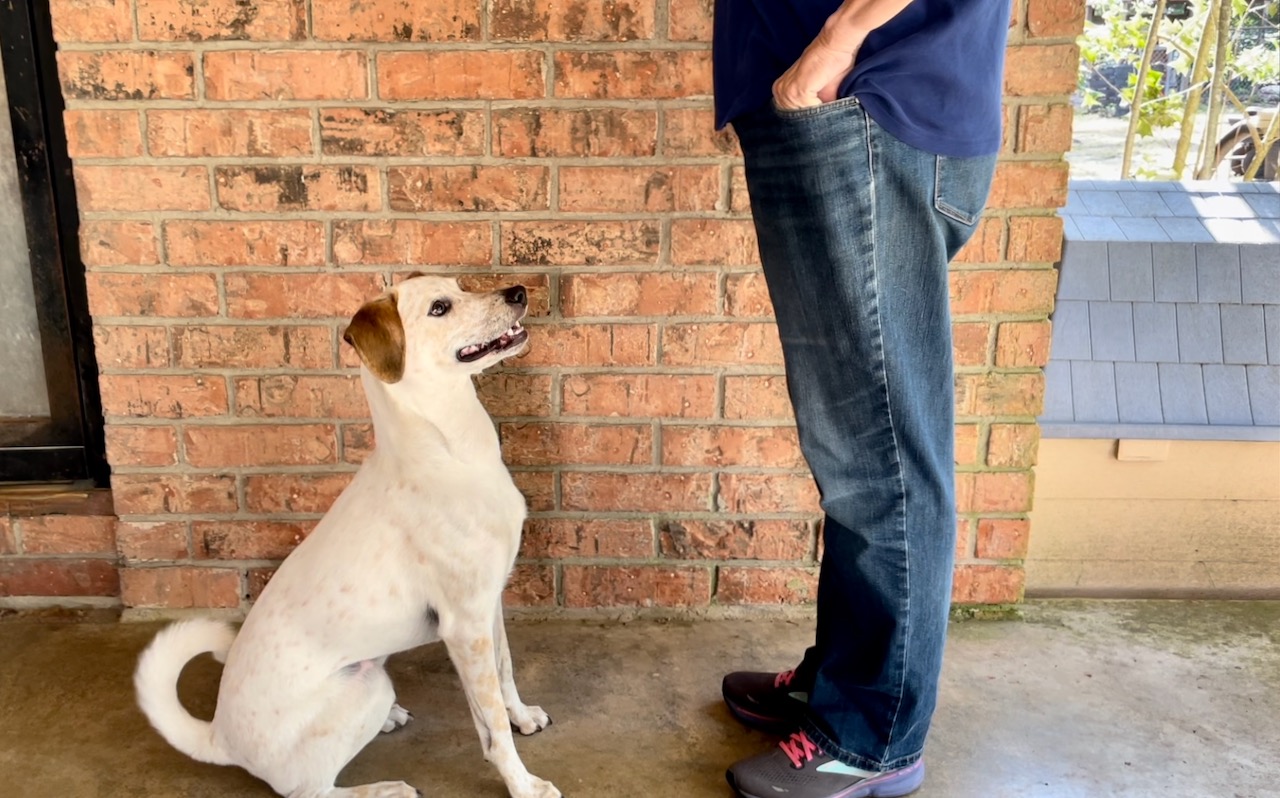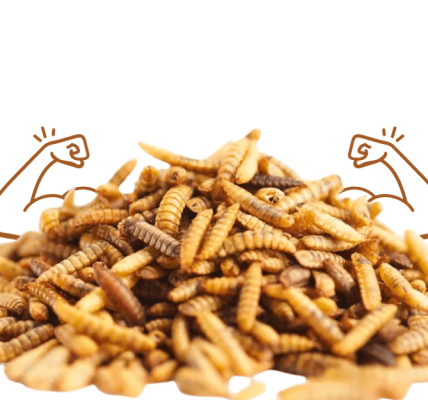What Is Overshadowing?
The term overshadowing has a long-established meaning in classical conditioning. The following definition is a little technical, but I’ll explain in the rest of the piece.
Overshadowing occurs when two stimuli are classically conditioned at the same time. Often, the stimuli are of different sensory modalities. An example would be a visible light and an audible sound. When they are conditioned simultaneously, one stimulus may dominate and be more strongly conditioned than the other. It is one of the many things that can cause a classical conditioning protocol to fail or be weak.
So the above definition can make sense to all readers, I’ll first review the difference between operant conditioning and classical (Pavlovian) conditioning.
In operant conditioning, there is an antecedent, a behavior, and a consequence. For example, I cue my dog to come to me (antecedent). My dog runs to me (behavior). I give my dog something terrific (consequence). Most of us are familiar with this kind of learning.
In classical conditioning, no behavior is required of the animal. We pair something the animal is indifferent to or worried about with something the animal loves. We do this gradually at intensities that don’t scare the animal. The order is: 1) present the weird thing; 2) present the great thing. Then the animal eats, drinks, experiences, or plays with the great thing. Over time, this transfers the animal’s respondent behaviors and good feelings about the great thing to the formerly weird thing.
We call the originally weird thing the conditioned stimulus. The great thing is usually an unconditioned stimulus: something the animal doesn’t have to learn to enjoy or need. Here’s a more in-depth look at what classical conditioning is and is not.
Since there are only two things to do—expose them to the weird thing, then give them the great thing—it seems like classical conditioning would be dead easy. But there are many things that can go wrong, and one of them is overshadowing.
Overshadowing is likely when you have a stimulus with more than one aspect, such as a light and a sound together. This is called a compound stimulus, and they happen in the real world a lot. When the individual stimuli get conditioned simultaneously, whichever stimulus is stronger and more noticeable to the animal will be conditioned more strongly. It is said that this stimulus is more salient. More of the good stuff from the great thing will transfer to it. The other stimulus will get much less conditioning. Experiments have been performed, for instance, with a dim light and a loud noise that occur simultaneously (Kehoe, 1982; Moore, 2012, p. 204–205). They are conditioned together, then tested separately. In this case, the noise will likely be robustly conditioned. But the light will have very little conditioning. You could reverse the experiment with a bright light and a quiet noise, and the results would be the opposite (although both examples would vary by species).
The overshadowed stimulus does not go entirely unnoticed; it simply does not become an effective conditioned stimulus.
Chance, 2003, p. 84
How is this relevant to our real-world training? Most of us are not trying to condition a sound and a light at the same time. More likely, we are working on a single thing like a muzzle, a noise, or the sight of another dog. But accidental compound stimuli happen all the time. As one textbook points out, it’s almost impossible to avoid them (Pierce & Cheney, 2008, p. 58).
There are always many things going on in the environment, and our animals are constantly trying to figure out what the best predictors of good (and bad) stuff are.
The reason this is important is that sometimes the stronger conditioning will attach to something we don’t intend, instead of the thing we want.
Pavlov discovered overshadowing very early on, and was the one who named it. Here’s what he said:
When the stimuli making up the compound act upon different analyzers, the effect of one of them when tested singly was found very commonly to overshadow the effect of the others almost completely, and this independently of the number of reinforcements to the compound stimulus.
Pavlov, 1927, p. 141
Other scientists have pointed out that even if a stimulus is the weaker one of a compound stimulus, it can work fine as an individual stimulus.
…if two stimuli are presented together as a compound DS, then one may dominate or overshadow the other, even though both CSs would be perfectly effective if they were presented alone.
Schwartz et al, 1995, p 59
It’s important to keep in mind that overshadowing applies to two conditioned stimuli being simultaneously conditioned by the same thing.
Why Do We Need to Know about Overshadowing (And Some Other Stuff)?
We need to understand overshadowing so we can perform the clearest, cleanest, most successful training we can. Classical conditioning, ad hoc counterconditioning, and desensitization and counterconditioning are straightforward to describe but the devil is in the details. Timing is crucial, and it’s a never-ending struggle to get the conditioned stimulus to be perfectly salient to the animal. Training in the real world, outside of the laboratory, means we can’t completely control the environment. For instance, I bet you have at least one light switch in your house that clicks when you turn it on.
Overshadowing is not the only potential problem.
To perform clean and effective classical conditioning:
• Be sure you also understand how to avoid blocking and reverse conditioning.
• Be sure you know how and why to do extinction trials.
• Know the difference between delay and trace conditioning.
• Make sure you understand the importance of the intensity of the unconditioned stimulus.
• Be sure you know why the first few exposures get you the most bang for your buck.
• Learn about the optimal time between trials (longer than you think!).
• Learn about the surprise factor and how to make use of it. There is strong evidence that the more unexpected the appearance of the unconditioned stimulus is, the stronger the conditioning affect (Rescorla & Wagner, 1972). Nothing cleans up one’s classical conditioning act better than figuring out how to remove all the “tells” that something fabulous is going to materialize.
These are not just theoretical concerns. They are concepts and practices that apply directly to real life training and can make your training the best it can be.
If you have been reading the blog and watching my videos for a while, you may say, “But you have not followed all these things!” That’s right! I’m always learning. I plan to get some better videos up soon.
Real-Life Examples of Overshadowing
Here are some practical examples of overshadowing in dog training because of a compound stimulus.
1. An auditory marker plus a hand reaching for food. Clickers and other markers are classically conditioned to predict a reinforcer, usually food. But if you always reach for your treat bag at the same time you use your marker, you have a compound stimulus. Both are conditioned stimuli; your dog wasn’t born knowing the significance of your hand movement or the sound of your marker. One stimulus, the marker, is usually auditory. The other is visual. One will overshadow the other and be more salient to the dog. If your dog constantly stares at your treat hand, you know which one that might be. Lewis was happy to oblige me by staring at my hand and pocket so I could take the photo above.
Reaching toward your treat bag or pocket can overshadow the sound of your marker and may cause its conditioning to be weak.
2. A suddenly visible dog plus jingling tags. Let’s say you are helping a reactive dog using classical counterconditioning. You expose the dog to the sight and sound of a helper dog at a non-aversive intensity and present something fabulous. You perform trials of this at different times and locations, using desensitization to gradually bring the helper dog closer while staying in the trained dog’s comfort zone.
But what if your helper dog has loudly jingling collar tags? You have a compound stimulus: the visual appearance of the helper dog and the sound of the tags. If the dog you are working with has vision problems, or your setup caused the appearance of the dog not to be obvious, or your dog is sensitive to sounds, the jingling tags could be more salient. What happens in real life when a dog appears without jingling tags, the better conditioned stimulus? That positive association you tried to build up so carefully might not be there. It got overshadowed. When that type of problem occurs, people are apt to blame the conditioning itself or blame the dog.
3. Saying “Drop” and dropping treats at the same time (protocol specific). If you follow Chirag Patel’s method of teaching dogs to drop an item, there is a danger of overshadowing if you aren’t careful with your timing. (I’m not saying this is a flaw in the protocol; it’s just a handy example of an error a trainer might make.) This method has a strong classical conditioning component, even though it is teaching an operant behavior. In the method, you give a verbal cue, such as “Drop,” and follow it by dropping a handful of food. You do this first when there is nothing already in the dog’s mouth. The dog learns that the verbal cue predicts food on the floor, and their next operant behavior is usually to open their mouths and approach the food. After you repeat that process, if you then say the cue while the dog has something in their mouth, they will generally open their mouth in anticipation of the food. They drop the item.
It is an elegant method, and fairly foolproof. But what if you said “Drop” and always dropped the food at the same time? Dropping the food could overshadow the verbal cue. The verbal cue might merely be noise that happens as the dog sees the food. Then, if later you decided to clean up your technique and said “Drop,” then paused before dropping the food, the dog would wait until you dropped the food to let go of whatever was in their mouth. That means your cue would not work in an emergency when you didn’t have treats with you. Whereas if you do the protocol with the appropriate timing and follow the other steps, it will work even if you have no food with you.
Application to Operant Conditioning
For some reason, most articles on overshadowing I’ve read by dog trainers use operant examples. They are describing compound discriminative stimuli (cues) rather than compound conditioned stimuli used as conditioned reinforcers. (Whew!) There is a strong relationship between these two. Cues can be higher order conditioned stimuli, and conditioned reinforcers provide information about behavior. The difference is usually the role the stimulus plays in a training plan.
But in behavior analysis, the term overshadowing is used more when referring to first order classical conditioning. Out of eight textbooks, I found only one operant example (Domjan, 2014, p. 217). I’ve found some psychology articles that apply the term to operant protocols, though.
Here’s a paper about compound discriminative stimuli in operant protocols (Colwill & Rescorla, 1988). This is similar to the examples in the dog trainers’ articles. The article doesn’t use the term overshadowing (and the authors were experts on it). I’ll be happy to be corrected if overshadowing is used formally in the operant arena though; perhaps I haven’t found it yet.
I think I know why operant examples of competing discriminative stimuli are usually used in more informal articles: examples are easier to think of. Most of us have realized at times that a dog is following our hand signal and not the verbal cue we thought we were teaching. Even though classical overshadowing can happen to us, it’s perhaps less common or less dramatic.
When Overshadowing Doesn’t Happen
There’s always an exception. When dealing with conditioned food aversion, there are certain stimuli that intensify other stimuli rather than overshadowing them. This is called the potentiation effect (Bouton, 2007, p. 216–217). But most of us are never going to run into this.
What Is Overshadowing Not?
An article is being passed around in the training world that uses the term “overshadowing” to refer to conflicted emotional responses in horses due to faulty training. The author defines overshadowing as “…the food reinforcer and associated behavior are masking the animal’s true feelings and behavior around a stimulus.”
This idiosyncratic use of the term can do nothing but cause confusion. Overshadowing is a phenomenon with an enormous amount of research behind it and has been in the vocabulary of scientists and knowledgeable trainers for almost 100 years. Using it instead to refer to training errors that cause a horse or other animal to end up scared instead of comfortable can only muddy the waters.
Ironically, understanding what overshadowing and the other terms I mention above mean could help address the issues described in the article.
References
Bouton, M. E. (2007). Learning and behavior: A contemporary synthesis. Sinauer Associates.
Chance, P. (2003). Learning and Behavior. Toronto: Thomson-Wadsworth. p 84
Colwill, R. M., & Rescorla, R. A. (1988). Associations between the discriminative stimulus and the reinforcer in instrumental learning. Journal of Experimental Psychology: Animal Behavior Processes, 14(2), 155.
Domjan, M. P. (2014). The principles of learning and behavior. Cengage Learning.
Kehoe, E. J. (1982). Overshadowing and summation in compound stimulus conditioning of the rabbit’s nictitating membrane response. Journal of Experimental Psychology: Animal Behavior Processes, 8(4), 313.
Moore, J. W. (Ed.). (2012). A neuroscientist’s guide to classical conditioning. Springer Science & Business Media.
Pavlov, I.P. (1927) Conditioned Reflexes: An Investigation of the Physiological Activity of the Cerebral Cortex. Translated and Edited by G. V. Anrep. Oxford University Press, London. Can be accessed here.
Pierce, W. D., & Cheney, C. D. (2008). Behavior analysis and learning (4th ed.). Psychology Press.
Rescorla, R.A., & Wagner, A.R. (1972) A theory of Pavlovian conditioning: Variations in the effectiveness of reinforcement and nonreinforcement. In: Classical Conditioning II: Current Research and Theory (Eds Black, A.H., & Prokasy, W.F.) New York: Appleton Century Crofts, 64-99.
Schwartz, B., Wasserman, E. A., & Robbins, S. J. (1995). Psychology of learning and behavior. New York: W. W. Norton & Company.
Copyright 2023 Eileen Anderson











